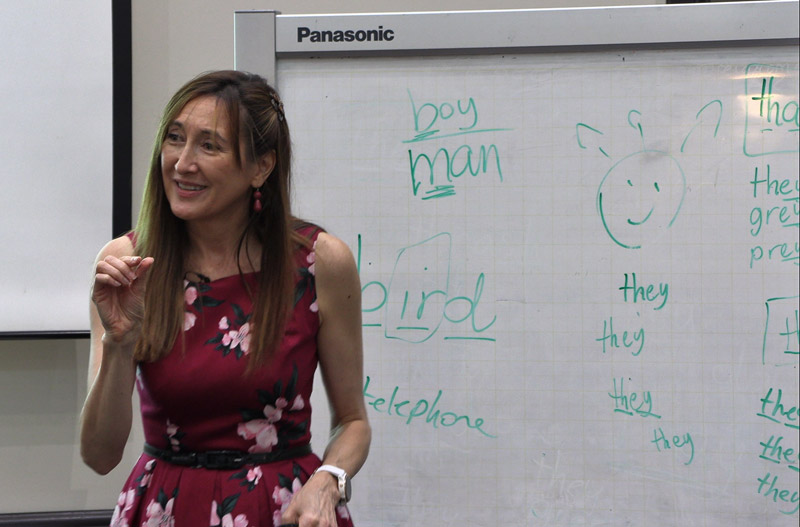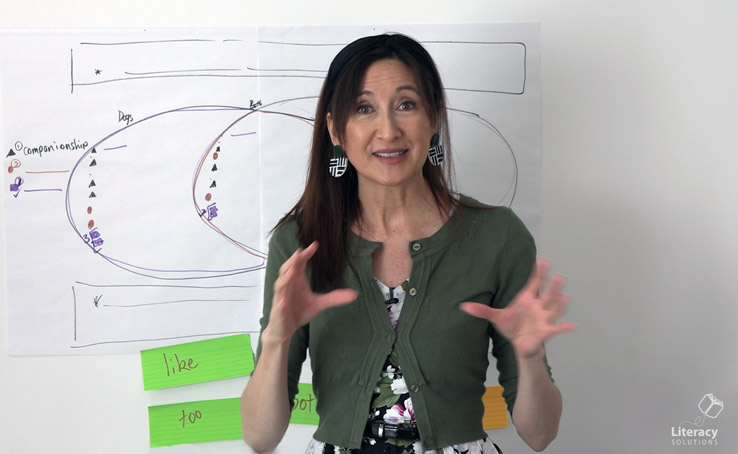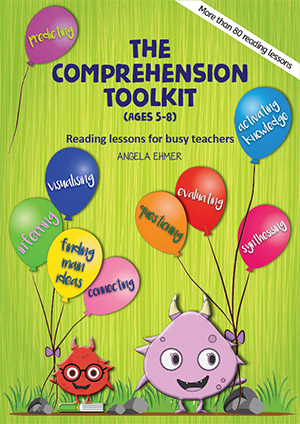‘One size fits all’ Vs ‘Good teaching judgments’
With the introduction of the Australian Curriculum, teachers have never been so inundated with products and programs claiming to enhance or build the literacy skills of students. Pre-packaged, or commercially produced programs for phonics, high frequency words, word work and comprehension have been around for decades and online access has added another dimension to their use.
Some products even claim to be effective in ‘teaching comprehension’ through individually completed work cards. An experienced teacher would rightly question the validity of this claim. The premise that these reading cards with accompanying questions/activities will actually teach students to comprehend is a dubious supposition. And there’s more… students will correct their own work, so the learning occurs without actual teaching? What sounds improbable, likely is.
The role of teaching programs/products
The most powerful vehicle we have for teaching comprehension skills and strategies is explicit teaching involving high levels of student participation. Interaction builds comprehension; independently completed worksheets cannot stretch thinking the way discussion can. What part of the (independent) comprehension work card recognises where students are having trouble and supports them to improve their understanding next time? Or, can students make similar errors repeatedly using some of these products?
So in these times of programs and products being marketed to, or even mandated for teachers, we must be even more reflective about how we teach, what we use and what it is we’re ultimately aiming to achieve. It is easy for the content to overshadow the process.
So, what is ‘one size fits all’ teaching? These would be programs which follow a rigid, predetermined sequence and may even identify the number of lessons to be delivered and/or the duration of each lesson. Some may even claim to differentiate by keeping students on a lesson level until they meet certain requirements (or reach a certain accuracy score). Is this differentiation? Do students actually receive re-teaching to improve, or do some students merely try alternate responses with little understanding about how or why?
Be wary!
Be wary of products or programs:
- with inflexible lesson sequences or content, i.e. cannot be easily modified in response to students’ needs (little or no scope for re-teaching, teaching using alternate methods or strategies, revising, modifying or applying),
- designed for students to use independently, but which feature mismatched skills, e.g. some components of a leveled task or lesson are very easy and others are too hard,
- designed for students to use independently but offer no further assistance for students to develop skills or knowledge not applied successfully,
- which claim to suit all learners, but which do not differentiate outside of repeating levels, lessons or components.
How can pre-packaged products or programs be used effectively?
Treat products or programs as resources to support quality teaching and learning. They can be useful in providing opportunities for students to practice applying their learning, or building automaticity around aspects of reading and writing. However, we must monitor progress carefully, providing further teaching, coaching or extension as needed.
The value of explicit teaching
Quality data, teacher observations and inferences inform planning and decision making. The quality of the expertise of the teacher is the most powerful resource in the classroom. Knowing what to teach, how to teach it and to whom, is critical. The ability to make good judgments about teaching and learning, informed by ongoing observations and formal data, drive quality teaching and learning experiences. Pre-packaged programs or products cannot observe students … their barriers to learning, shifts in learning or knowledge already present.
Something to ponder…
If you are a Queensland teacher using the Curriculum to Classroom (C2C) units, where do these resources fit? Should these units of work be implemented blindly? That is, without consideration of student needs? Or are the C2C units simply a resource to support teachers to implement the Australian Curriculum? What do you consider to be the ‘content’ within these units? How do you adapt or modify the units to meet the needs of your learners?
As always, I’d love to hear your thoughts on this topic.
Related post: ‘Costs and benefits of commercially produced literacy programs’





Great article for my Lit meeting tomorrow night, where I am trying to reinforce that explicit teaching when required is SO important!! and move some teachers away form using teacher-made comprehension sheet for the whole class!!
Lit Leader
Sadly many schools are being told to teach the C2Cs. They are ‘one size fits all’ and I believe are so content driven that there is little time left to actually explicitly teach aspects that a) need to be taught, b) need to have more work. As for starting where the students are at…..
I couldn’t agree more, Gwen.Adhering only to C2C leaves no time to actually explicitly teach to your students’ needs. There is not time enough to complete the tightly packed Units, let alone revise,review, revisit etc.. The teacher and students have time only to visit the topic once. C2C is divided into inflexible numbers of lessons as if one never has interruptions and allows for no planning flexibility or even for public holidays and excursions etc.
I agree wholeheartedly. In thirty-six years teaching I have never felt so inadequate and so disempowered to do what I know my students need.C2C makes huge leaps and massive assumptions about our children’s knowledge and their ability to take things in without the revisit, revise and review time. At least themes and units of work (Dirty words now)could instill some interest/knowledge in those children who never go out anywhere or have family learning times.
We all need to take a small step back and look at C2C and then use good old common sense. I’m sure there’s good and not so good in all units and if worse comes to worse take a bit more time – I’m not prepared to rush things just because the unit plan says so.
I am a home tutor (not a teacher) trying to teach the C2C and it has been extremely difficult and stressful. The jump in curriculum is to great and the spelling has no link to English. There are mistakes in the send in sheets and the mistick is faulty. My kids’ confidences is very low.
I have taken a step back with C2C and agree depth of knowledge is paramount with any child’s learning. Now I can navigate C2C and MIStick more easily, I can concentrate on the needs of all my students. I agree with Lynne!